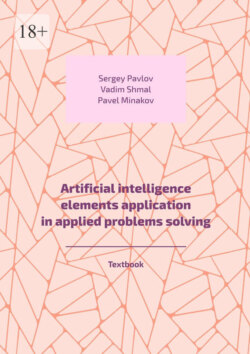Читать книгу Artificial intelligence elements application in applied problems solving. Textbook - Vadim Shmal - Страница 8
Knowledge Representation
ОглавлениеKnowledge representation and knowledge engineering enable AI programs to intelligently answer questions and make inferences about real-world facts that previously required humans.
The next major breakthrough in knowledge technology, which will completely change the rules of the game for every company in existence today, will be knowledge engineering, especially in terms of knowledge representation and knowledge engineering.
We need to be realistic about the impact it will have on much of the work people do. We’re still in the infancy of knowledge engineering and AI just didn’t have the time or resources to improve it to the point where we could use it to solve real world problems.
Whether or not AI is further developed, knowledge engineering is an area where we can benefit now.
To accelerate the development of this field, technology companies must be willing to take risks and actively engage with experts on topics related to knowledge engineering. By itself, knowledge engineering already shows great potential to improve many existing AI applications.
Knowledge representation and reasoning is a field of artificial intelligence (AI) designed to represent information about the world in a form that a computer system can use to solve complex problems, such as diagnosing a health condition or having a natural language dialogue. Applications of AI can be found in many areas, but primarily in data processing areas such as processing signals from sensors and processing search results and documents in big data processing.
Data mining has also become a field that has been developed with the advent of big data. Data mining is a field related to the creation of tools that collect, analyze and organize information into simplified representations. Once information is collected, it can be used to make predictions in finance, medicine, chemistry, and many other fields.
Graph algorithms, which are data mining tools, can be used to represent data in a computer system. These are specialized tools, often based on neural networks, that are well suited for data mining. Graphical algorithms are commonly used to model data in the form of simple charts or maps, such as data graphs, to show some information. Graph algorithms allow you to represent data as a sequence of nodes, each node represents the data and the connections between these nodes.
Neural networks are a special type of neural network used to perform artificial intelligence, graph algorithms, and machine learning. Neural networks are a type of machine learning that has been actively researched for decades. They are very effective in basic computing and artificial intelligence applications, especially in teaching. Neural networks are divided into different types such as long-term, short-term, random, linear, and vector.
The benefits of neural networks are well known. Neural networks can be used to solve many problems, they are flexible and generate results in a timely manner. They are used to solve various problems, including pattern recognition, anomaly detection, and machine learning. A neural network is simply a collection of nodes and connections that act as inputs and outputs to help neural networks perform complex tasks and generate desired results.
Modern deep learning architectures that implement neural networks are extremely powerful and efficient and can be used to efficiently solve data problems that would be difficult to solve with traditional methods. Machine learning algorithms for neural networks are specifically designed to mimic aspects of information processing in the human brain, allowing neural networks to solve complex problems.
Artificial intelligence systems are not limited to data processing tasks and can be used to provide a better understanding of the world around us and improve certain aspects of human behavior. AI is moving beyond data processing and is starting to use machine learning in the real world.
In the business world, AI systems can help increase productivity and reduce unnecessary overhead in areas such as supply chain management and supply chain optimization, manufacturing, inventory, customer relationship management and quality control. AI systems can be used to create new products, discover new ideas and patterns, and improve the inventory management process in a manufacturing or sales company.
In healthcare, AI systems can be used to analyze vast amounts of data from medical or diagnostic images to identify specific diseases and tissue changes.
By law, AI systems can provide decision support for litigation preparation, objectivity, facts, and other legal information. They can identify potential biases in evidence and present data to the courts.
Finally, AI systems can help industries with manufacturing and logistics. AI systems can help reduce factory inventory or use autonomous vehicles and machines to reduce the time and effort required to deliver goods.
Current applications of AI include a range of problems in information processing, computer vision, speech recognition, text recognition, image processing, video processing, audio processing, machine learning. Many of the underlying machine learning algorithms have been developed over decades, and now many systems have reached their limits.
AI is starting to reach the limit of the technology’s performance on certain tasks and moving into new and more complex areas.
Due to the variety of applications, it will be several years before AI systems reach their full potential. In the business world, AI systems can increase a company’s efficiency and speed, and reduce or eliminate unnecessary costs by analyzing data and developing new processes to create new products.
The AI system can use the information that has been provided to the system to determine whether it should make a prediction about the outcome of a particular decision. For example, an AI system can understand that a certain decision has been made based on the information provided by the user. It can then determine if the prediction provided by the user is accurate. If the prediction an AI system makes is accurate, it can reduce processing time and improve decision accuracy.
